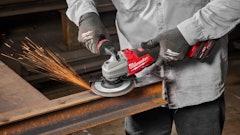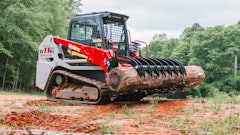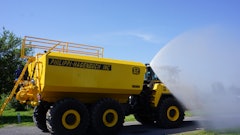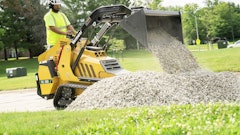The local department of public works is a frequent source of frustration to those of us with even a basic understanding of proper construction practices. Currently, the street outside our office has been stripped down to its base — with the primary employee entrance to our parking lot blocked. Crews have been absent the past couple days, and there is no end to the work in sight.
It’s pretty clear we’re not dealing with pros when it comes to construction. And they’re also no experts when it comes to proper safety practices. A lack of adequate signage around the work area, little notice of street closures and inadequate safety equipment are commonplace on this and other DPW projects around town.
Since municipalities are not exempt from OSHA requirements, it calls into question the level of safety training and equipment these workers have been provided. (It also plays into the larger issue of municipalities self-performing work better left to professional contractors due to a lack of infrastructure funds.)
Poor safety practices place both workers and the public at risk. And we all know city workers aren’t the only guilty parties. No doubt you’ve walked onto or driven past construction sites where required safety practices weren’t being followed. This lack of professionalism harms all construction businesses. It tarnishes the industry’s image, drives up insurance rates, makes it more difficult to secure project and equipment financing and places the industry at risk of increased regulation and the subsequent costs that go along with it.
In this age of easy access to information, there is no excuse for “ignorance” of the safety procedures and equipment required to protect workers and bystanders around a jobsite. In addition to the reams of regulatory and safety information at www.OSHA.gov, there is a wealth of product and training information available in publications (e.g., Construction Zone Safety and IPAF Elevating Safety) and online (see the Safety section of ForConstructionPros.com) that can be used to educate both employers and workers. There are also third-party safety/risk management companies that can help train workers and/or identify safety hazards and the best methods to mitigate them.
Safety isn’t just a legal requirement for your jobsites. It’s smart business. Contractors that fail to follow proper practices are often oblivious to the potential costs to their bottom line.
OSHA’s $afety Pays program is designed to help contractors better understand how a lack of safety can impact their businesses and their profitability. The program’s worksheet lets you choose a type of accident-related injury from a list, then enter information such as workers comp costs, profit margin and number of injuries. It then estimates the direct costs (e.g., fines) and indirect costs, as well as the amount of sales that would be needed to cover these costs. Learn more about the program in the blog “How Much Does Safety Affect Your Profitability” at ForConstructionPros.com/10962552 or by searching “OSHA Safety Pays” at www.OSHA.gov.




















